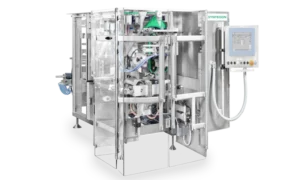Tablets have become an integral part of our daily lives, from communication and entertainment to education and productivity. Behind the sleek and portable design of these devices lies a sophisticated manufacturing process that involves cutting-edge technologies. For business owners looking to venture into tablet manufacturing or collaborate with a Tablet Manufacturer in the Philippines, understanding these technologies is crucial. In this blog post, we will delve into the various technologies used in tablet manufacturing to provide valuable insights and support your journey in the industry.
Blending and Granulation Technologies
The first step in tablet manufacturing involves blending the active ingredients and excipients to create a homogenous mixture. High-shear granulators and fluid bed granulators are widely used in this stage. High-shear granulators effectively mix and granulate powders, while fluid bed granulators help achieve uniform granule size, improving tablet consistency.
Tablet Pressing Machines
Tablet pressing machines, also known as tablet presses, are pivotal in converting granulated powder into the familiar tablet form. These machines exert specific amounts of pressure to compress the granules into tablets of consistent shape, size, and hardness. Modern tablet presses are equipped with sophisticated features, such as automated controls and real-time monitoring, ensuring efficient and precise tablet production.
Coating and Film Technologies
Tablets may undergo coating to enhance stability, improve appearance, or enable delayed-release properties. Coating technologies, such as pan coating and fluid bed coating, facilitate an even and uniform coating application, protecting the tablet’s active ingredients from environmental factors.
Quality Control and Inspection Systems
Maintaining product quality is paramount in tablet manufacturing. Various technologies, including Near-Infrared (NIR) spectroscopy and automated visual inspection systems, are employed for real-time monitoring and quality control. NIR spectroscopy enables rapid analysis of raw materials and finished products, ensuring they meet specified quality standards. Automated visual inspection systems meticulously check tablets for defects, such as chipping or discoloration, ensuring only high-quality tablets reach consumers.
Cleanroom and Aseptic Technologies
In pharmaceutical tablet manufacturing, maintaining a sterile environment is crucial to avoid contamination. Cleanrooms equipped with high-efficiency particulate air (HEPA) filters are used to prevent the entry of contaminants during the manufacturing process. Aseptic technologies, such as isolators and restricted access barrier systems (RABS), further safeguard against microbial contamination in the production of sensitive products.
Quality Management Systems (QMS)
Tablet manufacturers implement robust Quality Management Systems (QMS) to ensure consistent product quality and compliance with regulatory standards. QMS involves a systematic approach to document control, risk management, deviation handling, and continuous improvement, providing a structured framework for maintaining product quality and safety.
Conclusion
As the demand for tablets continues to rise, technological advancements play a pivotal role in enhancing tablet manufacturing efficiency, precision, and quality. From blending and granulation technologies to quality control systems, these innovations streamline the manufacturing process and ensure the delivery of high-quality tablets to consumers. For business owners looking to enter the tablet manufacturing industry or collaborate with a Tablet Manufacturer in the Philippines, staying abreast of these cutting-edge technologies can pave the way for successful ventures and contribute to the development of innovative tablet products in the market.



































